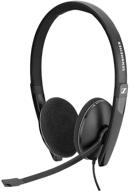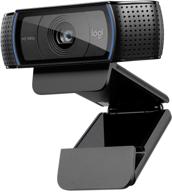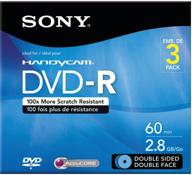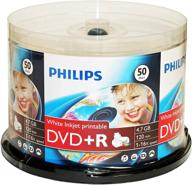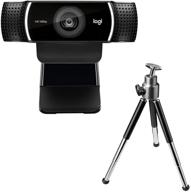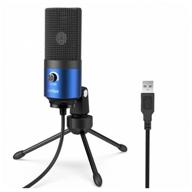Choosing the Right Computer Speakers
Getting quality audio from your computer is important for listening to music, watching videos, gaming, and more. There are a few key factors to consider when selecting computer speakers.
Getting a Clear Sound
Look for speakers with good frequency response. You want speakers that can reproduce the full range of sounds - highs, mids, and lows. The frequency range is typically measured in Hertz (Hz). Most good computer speakers have a range of at least 45Hz to 20,000Hz.
Powered vs Passive Speakers
- Powered speakers have a built-in amplifier to drive the speakers.
- Passive speakers require a separate amplifier or AV receiver.
For most desktop setups, powered speakers provide an all-in-one solution without needing extra equipment.
Wired vs Wireless
- Wired speakers connect directly to your computer using cables.
- Wireless speakers use Bluetooth or Wi-Fi and allow placement anywhere within range.
Wired options have slightly better sound quality as there's no signal compression. But wireless speakers give you more flexibility with placement.
2.0 Stereo vs 2.1/5.1 Surround Sound
- 2.0 stereo has left and right channel speakers.
- 2.1 has stereo speakers plus a subwoofer for bass.
- 5.1 surround adds center, side, and rear speakers.
For most computer uses, a 2.0 or 2.1 setup is sufficient. 5.1 systems work better for fully immersive audio like movies and gaming.
Test speakers first if possible and choose a set that sounds good to your ears at normal listening volumes. The key is finding the right balance of audio quality, features, and budget for your needs.
Getting a Clear Sound from Computer Speakers
Achieving a crisp, clean sound from your computer speakers makes all the difference when listening to music, watching videos, or gaming. Here are some tips to get the best possible audio quality:
Check the Frequency Response
Frequency response indicates the range of sound frequencies the speakers can reproduce. Most quality computer speakers have a frequency response of 45Hz to 20,000Hz, covering the full range of low bass to high treble sounds audible to the human ear.
Consider the Speaker Drivers
- Larger drivers (over 3 inches) produce richer bass.
- Smaller tweeters are better for high frequencies.
- Look for speakers with matched drivers for cohesive sound.
Power Matters
Powered speakers with built-in amplifiers provide clean audio at higher volumes. For multimedia uses, look for at least 10-20 watts per channel.
The Enclosure Makes a Difference
High quality speaker enclosures are designed to minimize sound distortion. Common types include:
- Sealed boxes for accurate, controlled bass
- Ported boxes for deeper low-frequency extension
- Passive radiators for rich, booming bass
Position Speakers Optimally
- Place left and right speakers equidistant from your listening position.
- Angle speakers inward slightly to create a wider stereo image.
- Keep speakers away from walls to reduce acoustic reflections.
Properly positioned speakers create an immersive soundstage with clarity and depth. Experiment with placement to find the ideal setup for your room.
Investing in speakers optimized for tonal balance and low distortion makes a huge difference in sound quality. Follow these tips for the best audio experience from your computer.
Top products in 💻 Computer Audio & Video Accessories
Powered vs Passive Speakers
When choosing computer speakers, one of the biggest decisions is whether to get powered or passive speakers. What's the difference, and which is better for your setup?
What are Powered Speakers?
Powered speakers have a built-in amplifier to provide power to the speaker drivers. They include:
- An amplifier built into one or both speakers
- Speaker wire connections between devices
- A power cable to plug into an outlet
Benefits of powered speakers:
- Simple, compact setup
- No need for a separate amp or receiver
- Active electronics optimize the speakers
What are Passive Speakers?
Passive speakers require an external amplifier to power them. Key components include:
- An AV receiver or power amp to drive speakers
- Speaker cables connecting amp to speakers
- Wall power for the amplifier
Benefits of passive speakers:
- Flexibility to customize your setup
- Ability to upgrade amp separately
- Often used in high-end audiophile systems
Powered vs Passive: Which is Better?
For most desktop or multimedia setups, powered speakers provide a simple all-in-one solution. Passive speakers are preferred for higher-end home theater systems.
Consider your use case, budget, and desire for upgradability. Powered speakers provide convenience, while passive speakers offer flexibility. Focus on finding speakers with good sound quality for your needs.
Wired vs Wireless Computer Speakers
When setting up computer speakers, going wireless provides more flexibility, while wired options offer slightly better audio quality. Let's compare the pros and cons.
Another interesting products
Wired Computer Speakers
Wired speakers connect directly to your computer using cables. Typical connections include:
- 3.5mm audio jack
- RCA or stereo RCA cables
- Optical/Toslink
- USB
Benefits of wired computer speakers:
- Simple plug-and-play connectivity
- No power needed for speakers
- Slightly better sound quality
Wireless Computer Speakers
Wireless speakers use Bluetooth or Wi-Fi to connect wirelessly to your computer. They offer:
- Completely cable-free setup
- Flexible placement anywhere in Wi-Fi range
- Easy portability and multi-device use
Downsides of wireless speakers:
- Audio compression slightly reduces quality
- Limited wireless range of 30-100 feet
- Higher cost than equivalent wired speakers
Which is Better?
Wired speakers provide slightly purer audio quality, while wireless models offer more flexibility. If audio fidelity is critical, choose wired. If you want to place speakers anywhere in a room, go wireless.
Many speakers now support both wired and wireless connectivity for the best of both worlds. Evaluate your priorities to decide which works better for your computer setup.
2.0 Stereo vs 2.1 vs 5.1 Computer Speakers
When choosing a computer speaker system, three common setups are 2.0 stereo, 2.1, and 5.1 surround sound. What's the difference, and which is best for you?
2.0 Stereo Speakers
A 2.0 system contains left and right channel speakers for stereo sound. Key features:
- Two speakers placed on left and right sides
- Realistic stereo image and separation
- No dedicated bass for full range clarity
2.0 stereo speakers work well for music listening, multimedia, gaming, and general computer use.
2.1 Speakers
2.1 systems add a subwoofer for bass to a stereo setup. They include:
- Left and right speakers for mids/highs
- Powered sub for deep bass response
- Great for music, movies, and gaming
5.1 Surround Sound
5.1 setups add center, side, and rear surround speakers to 2.1 for immersive audio. Key components:
- Front left, center, right speakers
- Side left and right speakers
- Rear left and right speakers
- Subwoofer for bass
5.1 systems create a cinematic experience great for movies and gaming.
Which is Best?
For most computer uses, a 2.0 or 2.1 system provides an ideal balance. Only opt for 5.1 surround if you want fully immersive audio.
How To Choose The Right Computer Audio And Video Accessories For Your Needs?
Choosing the right computer audio and video accessories can be overwhelming, but it doesn't have to be. Here are some tips to help you make the right decision:
- Determine your needs: Consider what you will be using the accessories for and what features are important to you.
- Check compatibility: Ensure that the accessories you are interested in are compatible with your computer.
- Read reviews: Look for reviews from other users to get an idea of the quality and performance of the accessories.
- Consider the brand: Choose a reputable brand that is known for producing high-quality computer audio and video accessories.
- Look for deals: Check for deals and discounts to get the best value for your money.
- Buy from a trusted retailer: Purchase your accessories from a trusted retailer to ensure that you are getting genuine products.
Similar products
- Choosing the Right Computer Speakers
- Getting a Clear Sound
- Powered vs Passive Speakers
- Wired vs Wireless
- 2.0 Stereo vs 2.1/5.1 Surround Sound
- Getting a Clear Sound from Computer Speakers
- Check the Frequency Response
- Consider the Speaker Drivers
- Power Matters
- The Enclosure Makes a Difference
- Position Speakers Optimally
- Powered vs Passive Speakers
- What are Powered Speakers?
- What are Passive Speakers?
- Powered vs Passive: Which is Better?
- Wired vs Wireless Computer Speakers
- Wired Computer Speakers
- Wireless Computer Speakers
- Which is Better?
- 2.0 Stereo vs 2.1 vs 5.1 Computer Speakers
- 2.0 Stereo Speakers
- 2.1 Speakers
- 5.1 Surround Sound
- Which is Best?
- How To Choose The Right Computer Audio And Video Accessories For Your Needs?






